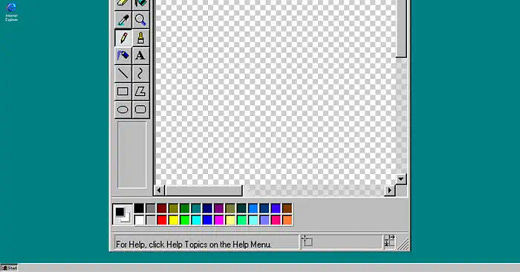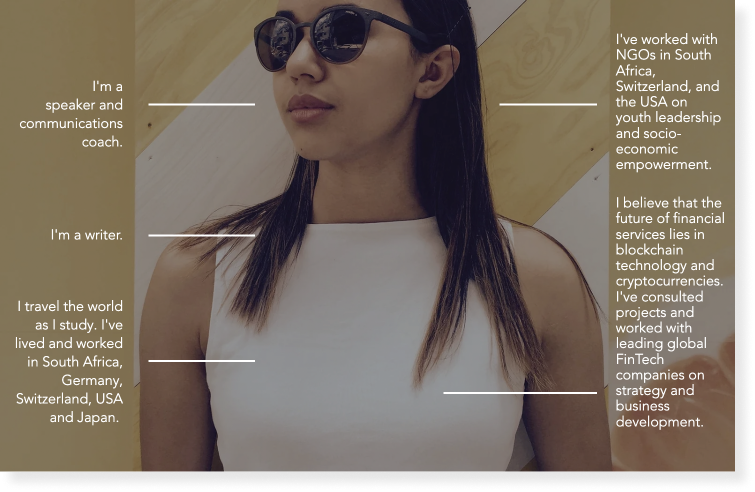When I was 17, I started a blog called The Liminal Space in an attempt to translate my wild and wonderful life to the outside world. This was around the time I was just beginning to travel, and I had the sense that if I did not learn to eloquently share my thoughts with those around me, an invisible barrier would form. This reflected an unconscious belief I held at the time – now a conscious awareness I’m often working against – which is that being understood is firstly, important, and secondly, the fruit of solo labour.
My blog became my outlet for travel writing, political critique, social commentary and spiritual pondering. Mostly, it was a reflection of my inner world and served as a concrete reference point upon which to fashion the ever-evolving external expressions of my identity.
Here’s a snapshot of my homepage circa 2016:
Over time, the aesthetic varied, becoming something of a signature piece that reflected a part of me to the world. When I moved to San Francisco for college, for example, the visuals reflected the intense liminality I felt in my own life. Here, I superimposed a picture of the field behind my family’s rural Transkei homestead with a landscape of downtown San Francisco.
After living in Tokyo, I felt that “The Liminal Space” no longer reflected the title of my journey. For a brief time I changed the title of my blog to “48 browns and 100 greys”, a popular saying from the Edo period in Japan (“Shi-ju-haccha, hyaku-nezumi”), attesting to the myriad hues established amongst the people at the time, hinting to a culture of refined attention to detail.
This was also the first time I featured anything career-related on my blog, clearly positioning my budding professional resume as a core part of my identity (now I look back and think, “ugh, so precocious!”):
Despite all the changes over the years, I clearly respected the impetus that drove it – “I write because it keeps me sane.”
But all things must evolve:
Today we are here – sorely in need of a refresh, neglected somewhat since moving my writing to Substack, and bringing up yet again questions of identity and personal narrative:
On the aesthetics of personal websites
“But Rebecca, why don’t you just stick with some variation of the simple one-pager and call it a day?”
I’ve noticed an uncanny trend amongst my most successful friends. All their personal websites are so empty. Like, purposefully bad.
The extent of their bio is a one-liner about their career.
It seems the distribution of personal websites goes from no website to generic probably over-decorated personal website to ultra minimal, times new roman, here’s some nostalgic hyperlink blue, coded-it-this-morning personal website.
The latter offers a 50/50 chance that anything will be capitalized, like
hi, i’m {so_and_so}
i’m a {position} at {tech_company} and casually do these 14 other very impressive things
If you’re lucky, you’ll find links to Twitter and Instagram. Maybe LinkedIn. More likely a .eth address. And your email must be displayed as my.address [at] gmail (to avoid the bots? I actually have no idea why people do this)
Minimalism, in any form, has never appealed to me.
Anyway, I digress.
Sites of meaning
The point I’m trying to make is that personal websites can – although not all do – serve as a site for meaning-making; importantly, one that endures time and can be returned to. In my own case, I continue to derive meaning from my personal website, and this quasi essay is a perfect example of that! But personal websites, and generally all digital reflections of identity, are also inherently limiting. They are limiting in the same way that how you dress never really tells people who you are.
Here I can’t help but reflect on more mainstream platforms that also serve as a tool for meaning-making. The difference though is that these platforms often co-opt whatever meaning is to be made for some profit-seeking agenda. The visual expression of one’s digital identity is turned into a single profile amidst a sea of many, its inherent value lost in the re-contextualized state of a reproducible, exploitable object.
It’s a perfect example of Baudillard’s third simulacrum – simulation – where everything has already been endlessly produced and even the ability to distinguish between the original and the imitation goes away (reality TV is another example). Nearly half a century ago, Baudrillard argued that we are living in a time where it feels like the past cannot be recovered and the future can only be consumed, thus we are suspended in the present.
On liminal spaces
I’ve been returning to the theme of liminality in my own life, and I think I’m learning that for those of us who embody an enduring liminal state – whether via frequent physical relocation or the lived reality of being multi-lingual or multi-cultural – there is something profoundly important about having external sites for the practice of liminality.
The places where we practice liminality are like a blank canvas; they serve as a container for creativity and an auxiliary medium for thinking, processing and reflecting.
My personal website was my blank canvas for more than seven years, but this is inevitably changing.
Today I am more interested in tools, digital and analogue, that lend themselves to a richer development of ideas. I have outgrown the pretty packaging of words on a screen and instead seek places and media where linguistic and visual processing converge in more embodied form.
Recently this has looked like a return to sketching and an interest in building/assembling physical objects and spaces. But I have also stumbled across digital tools like Are.na that provide an interesting playground for developing and connecting ideas. (If you’ve never used it yet, give it a try! I love where they’re going but personally find it a cumbersome tool right now because of lack of mobile optimization. I eagerly await the day they raise bucket loads of money so they can deliver a seamless experience for tending to gardens of ideas.)
When we talk about the future of the digital sphere, it seems we focus heavily on social interactions, data ownership and new economies – yet very seldom on individual and communal meaning-making.
What does “ritual” look like on social media? Does it even belong there?
What is the “personal website” of the future?
How will new forms of digital identity afford new means of identity mapping?
In the meantime, I may very well settle for the 1-pager with times new roman, font 12 after all.
P.S January 25, 2023: I recently stumbled across the personal website of Jonah Weiner (co-creator of Blackbird Spyplane, my new favourite newsletter) and I think it’s brilliant.
P.P.S July 13, 2024: Many of my peers are starting personal websites for the first time (usually for professional reasons) and asking for advice. If you’re one of them, I probably also sent you a fantastic essay by Laurel Schwulst, My website is a shifting house next to a river of knowledge. What could yours be? In summary, a personal website can be whatever you want it to be! As you embark on this journey, don’t forget to have fun with it.
P.P.P.S January 24, 2025: Stumbled across Chia Amisola’s gem of an essay, On Domain Naming. Probably the most thorough and beautiful reflection I’ve come across on meaning-making through websites.












